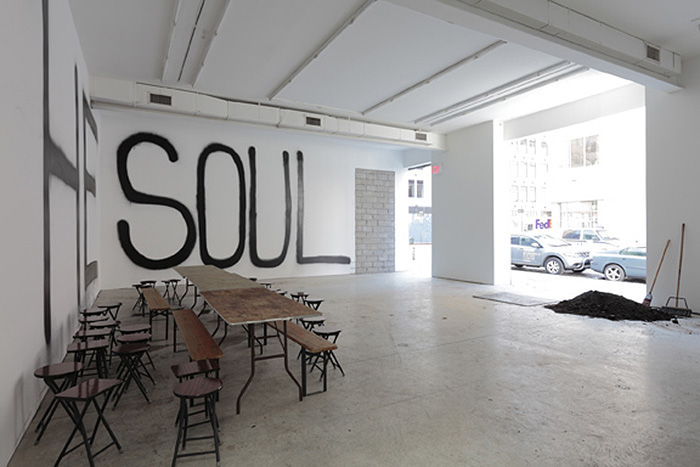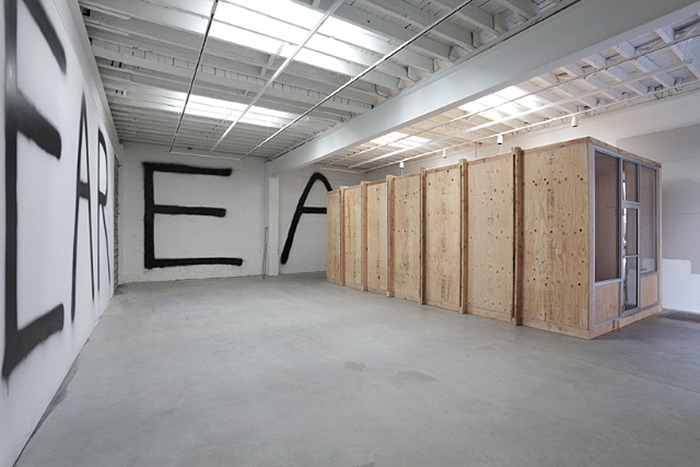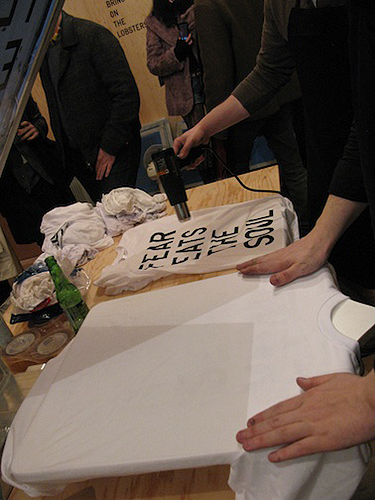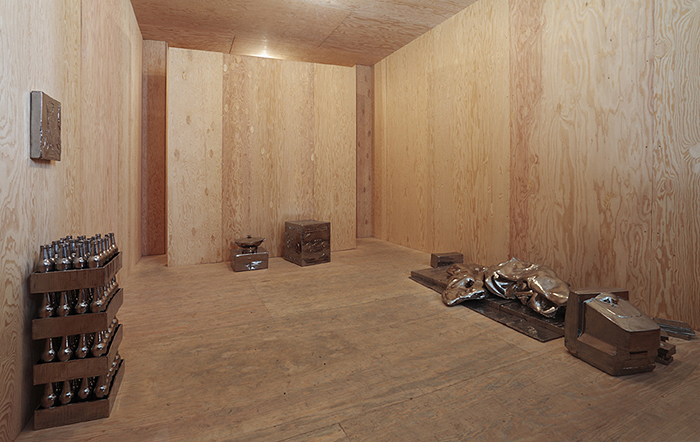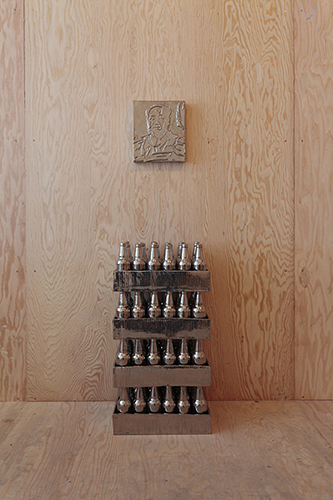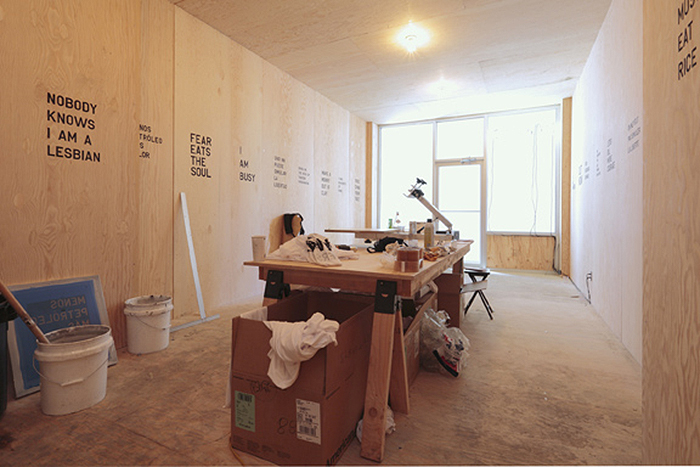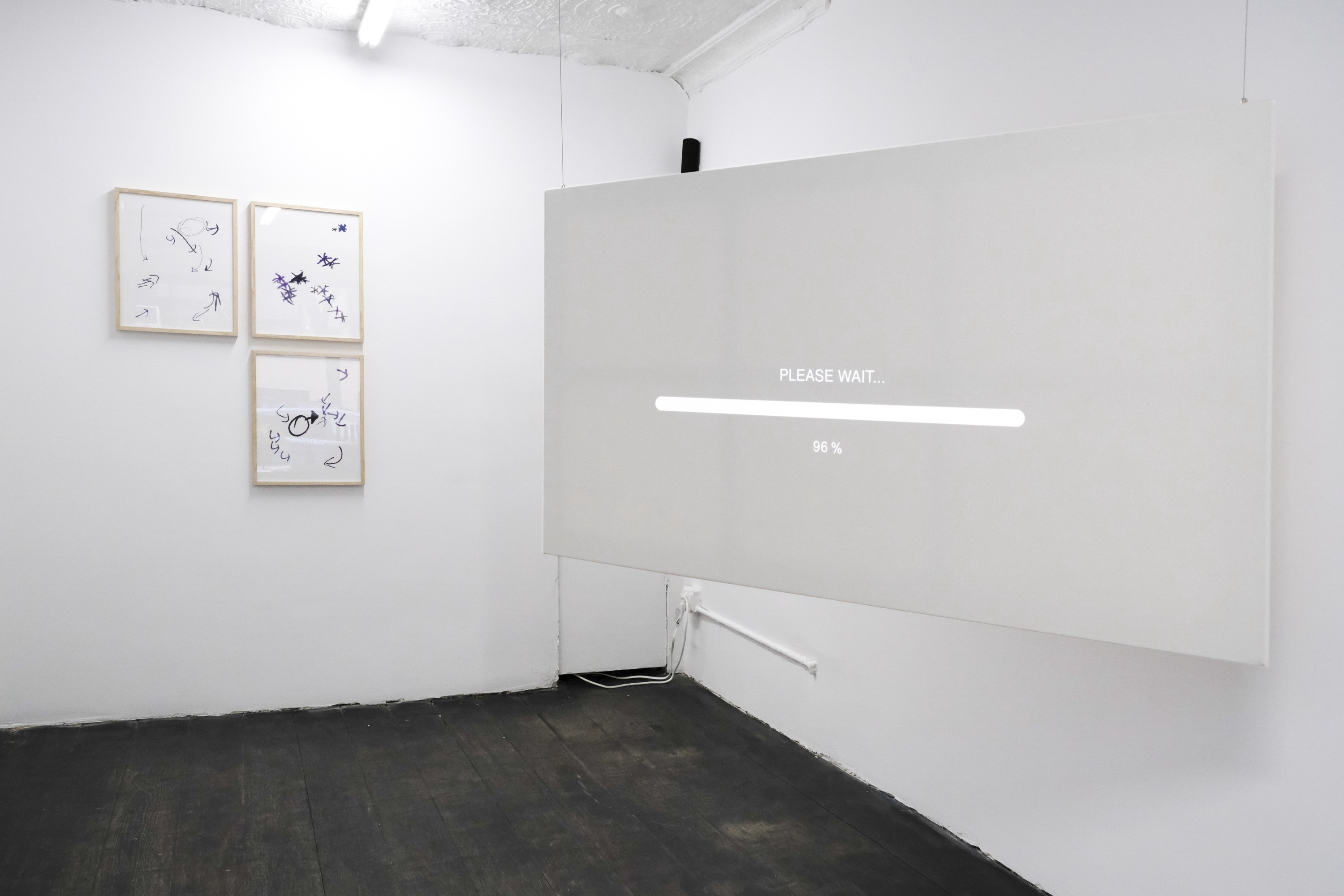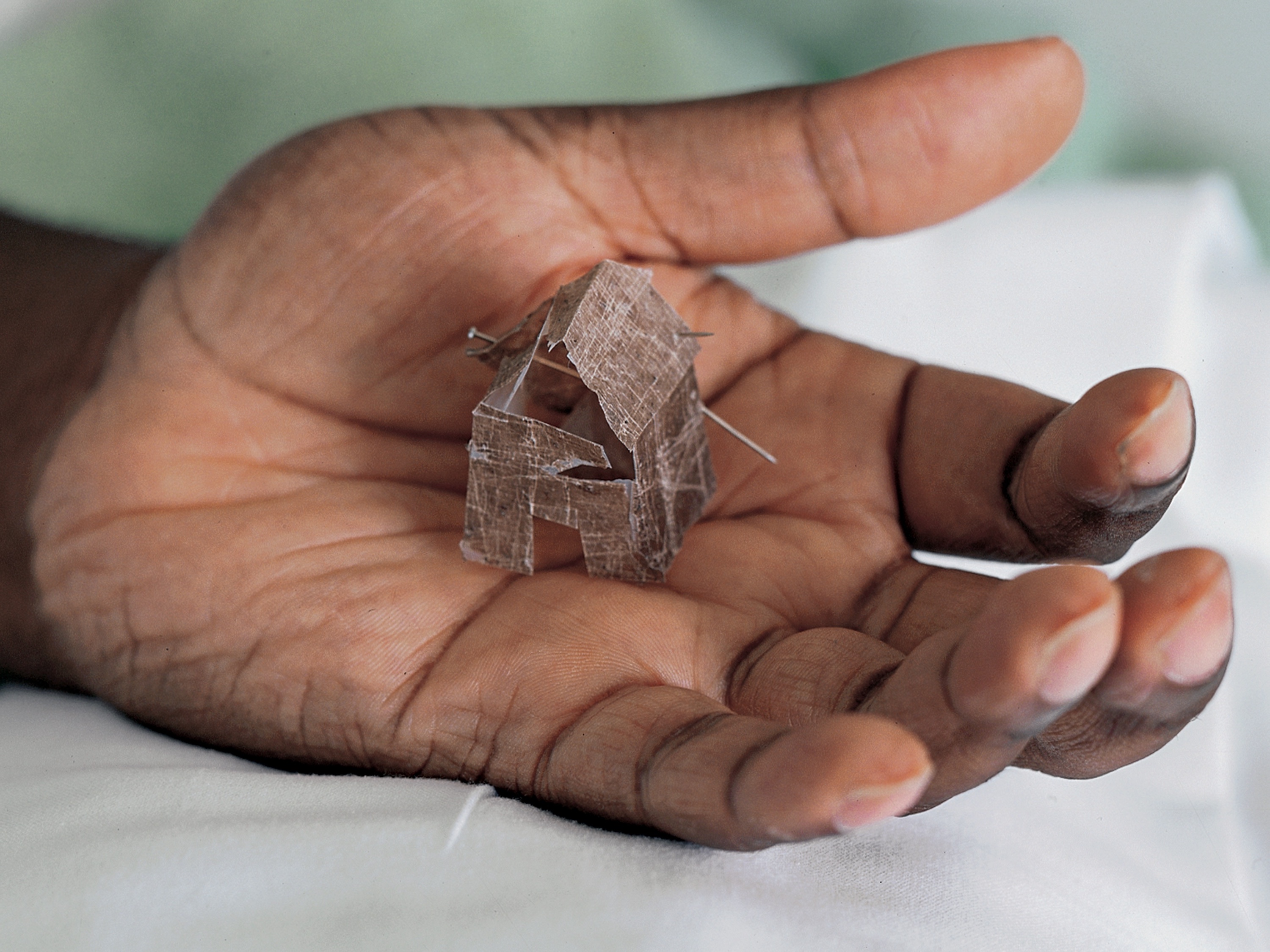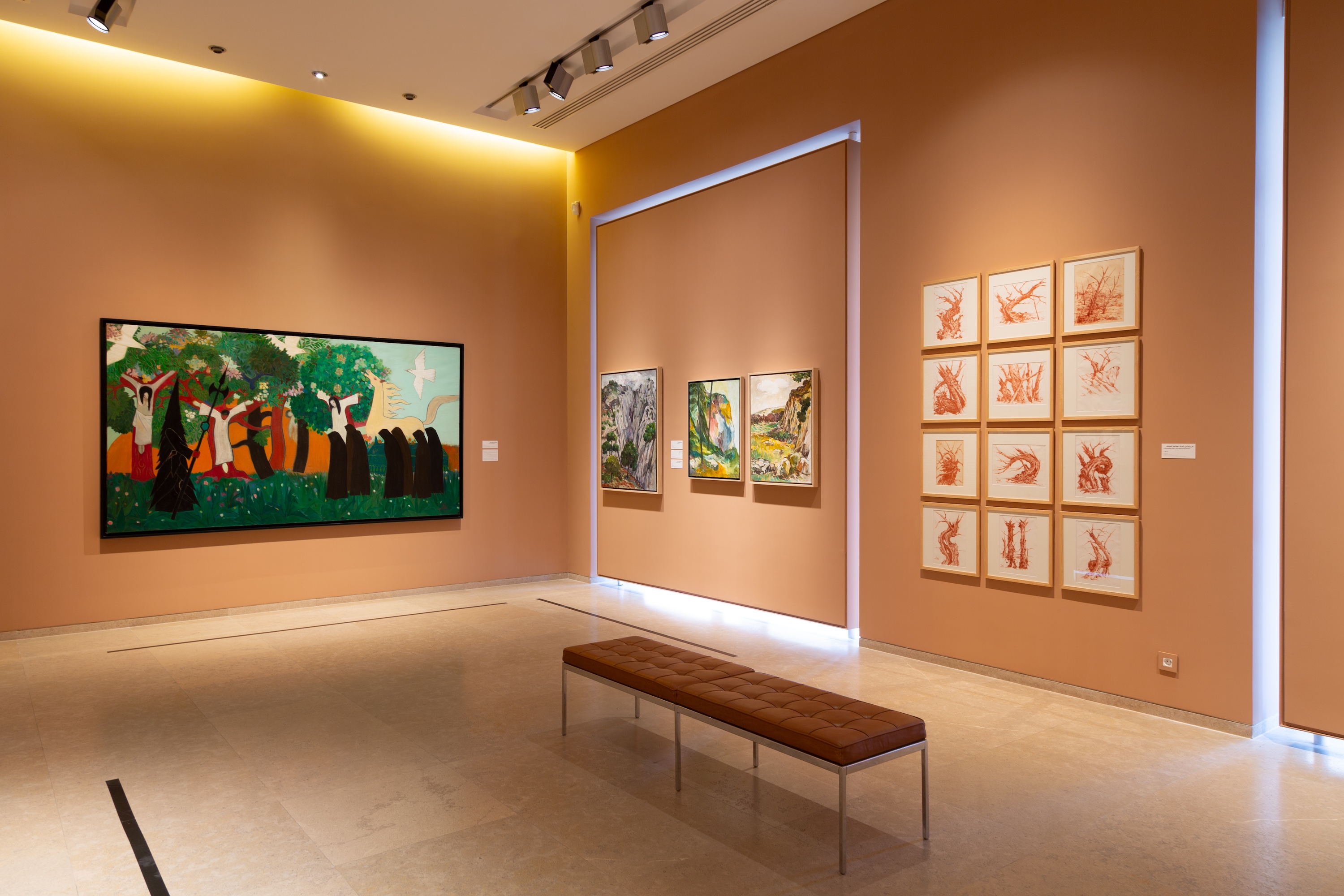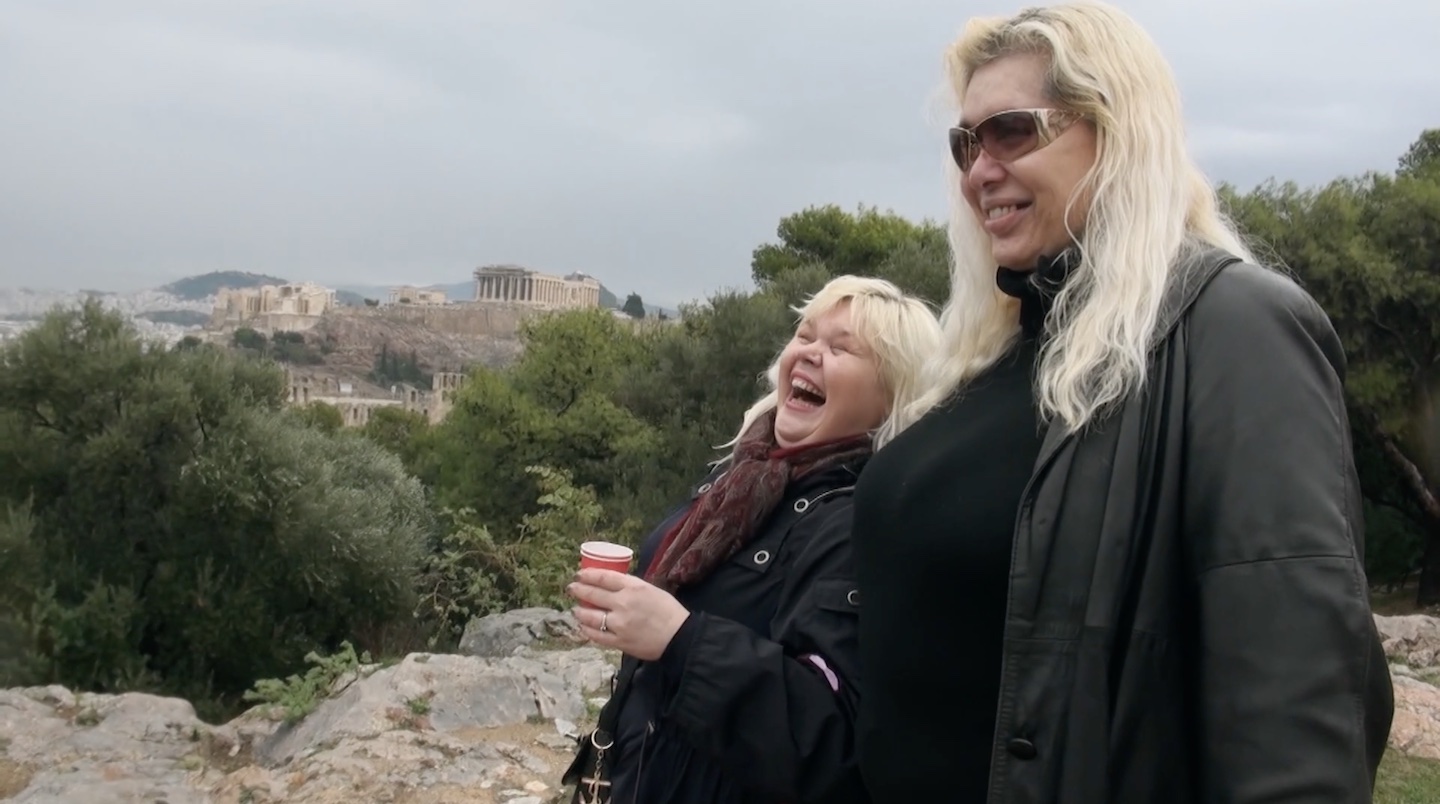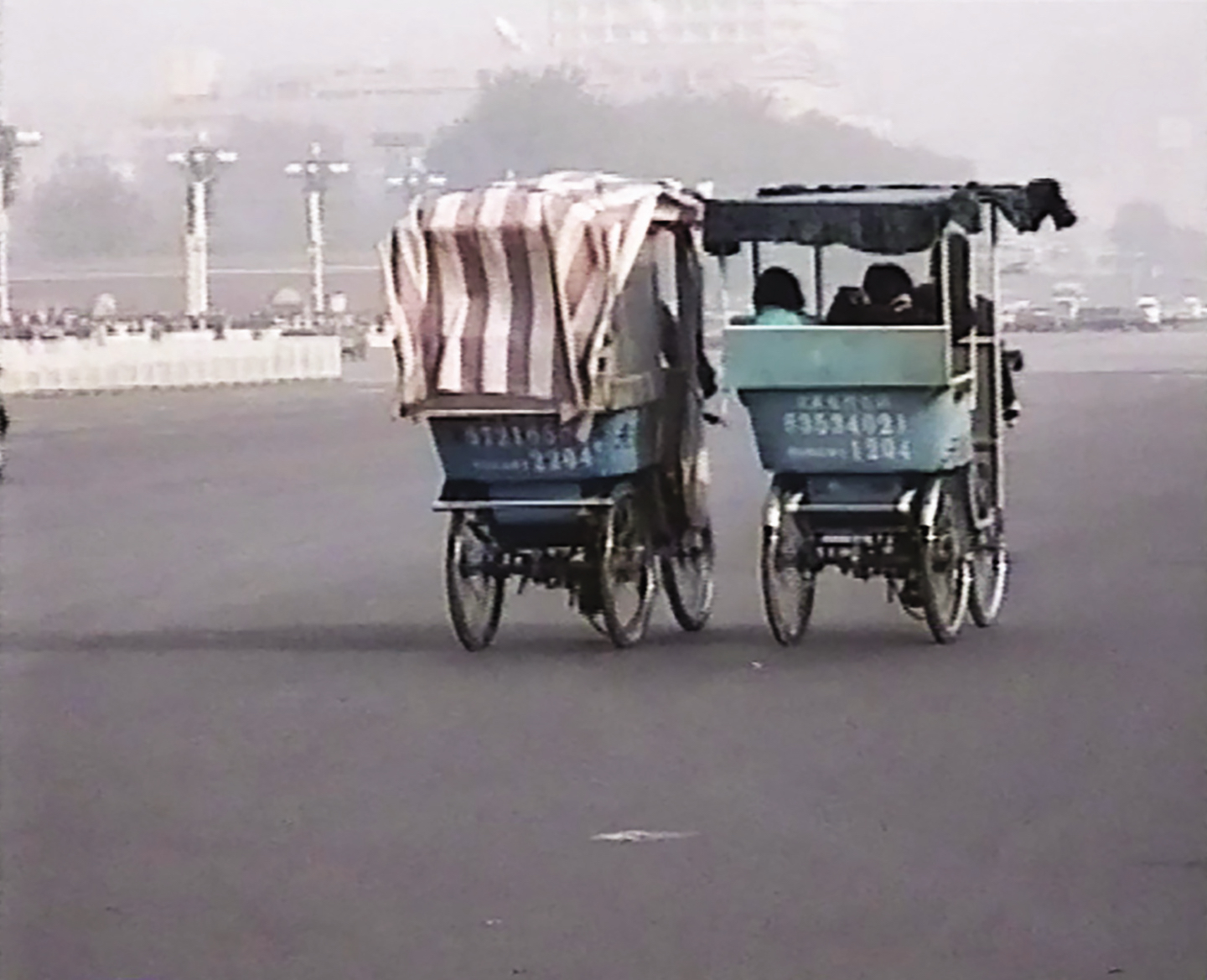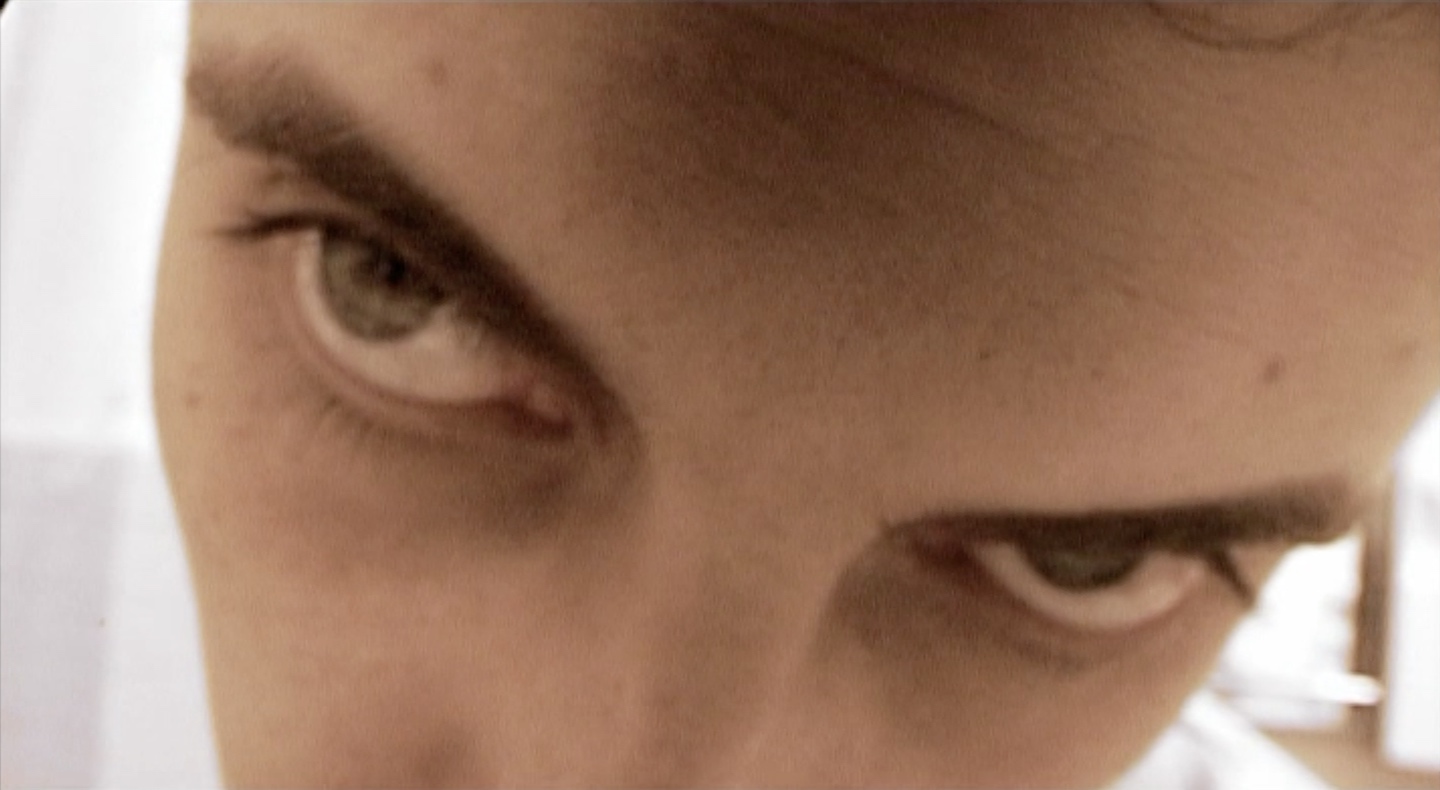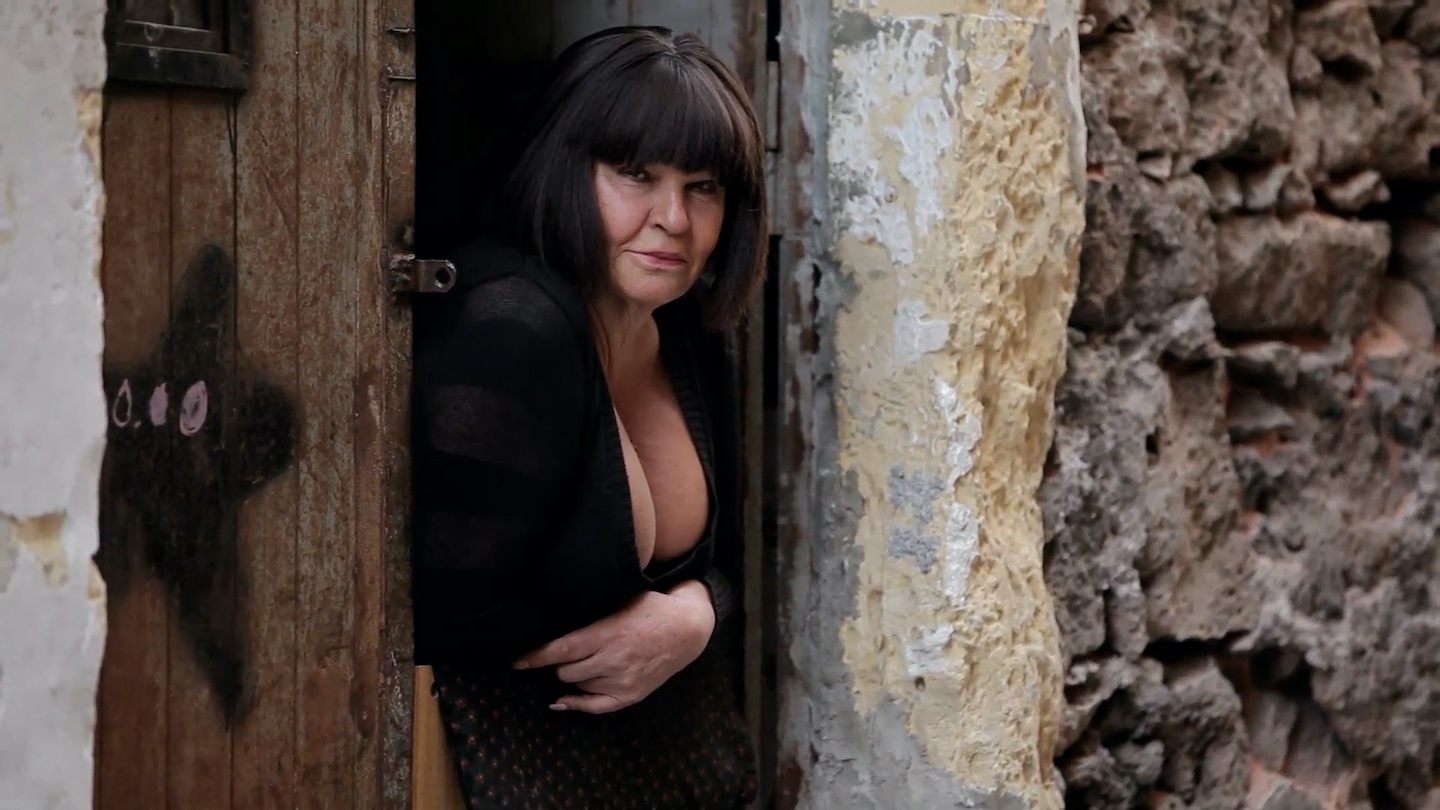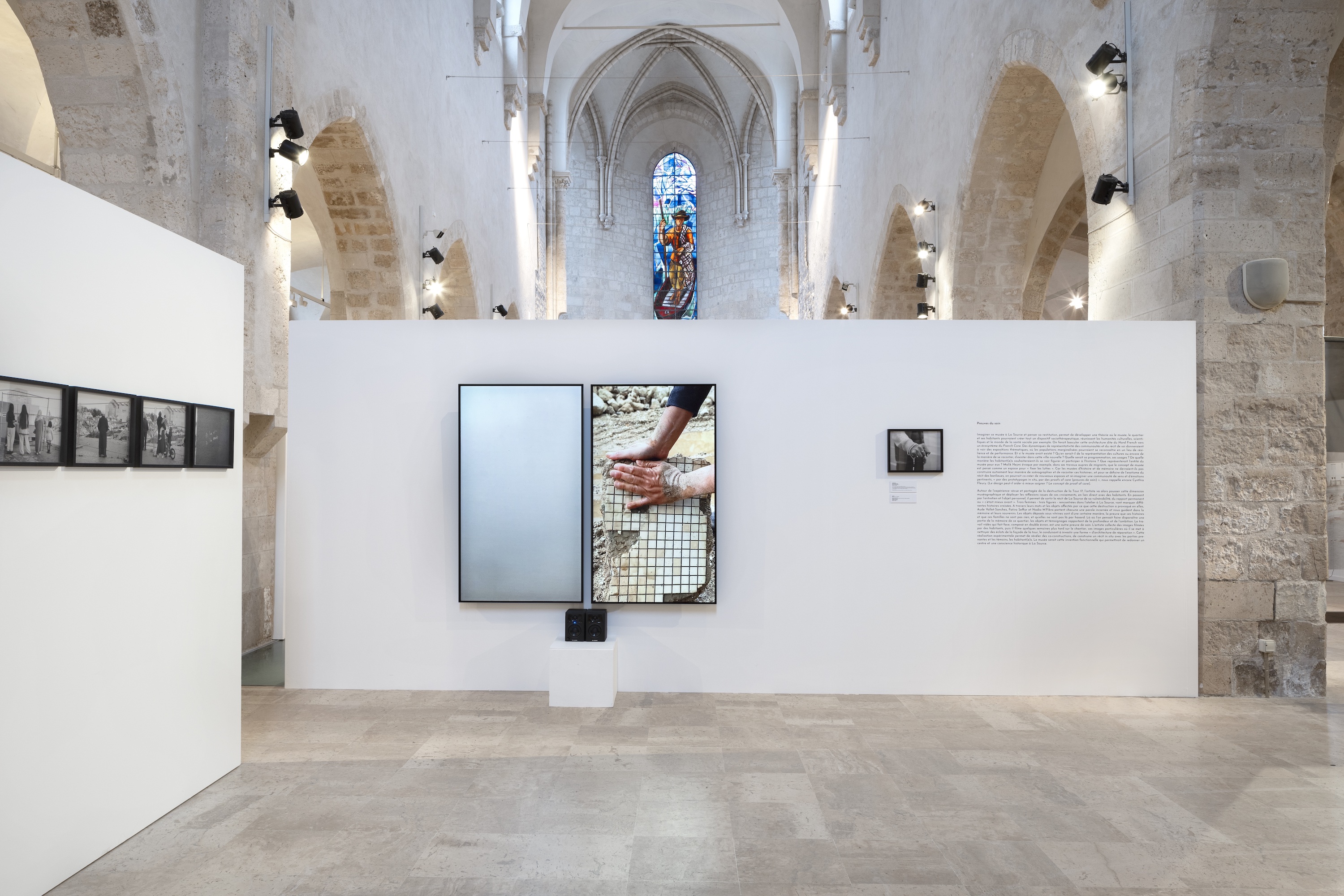March 5–April 23, 2011
The most striking thing about Rirkrit Tiravanija’s recent New York show is also its most organic aspect: the windows and doors of the main exhibition space have been removed, exposing the interior to the street. From the outside, the space looks empty except for the soaring black letters spray-painted on the walls. Once inside, visitors can piece together the show’s bleak title from the letters: FEAR EATS THE SOUL. The exhibition is built on many references, some obvious (the 1974 Rainer Werner Fassbinder film, Andy Warhol’s Pop appropriations), others more personal and revealed only through conversation with the artist (the recent shooting in Arizona, Gordon Matta-Clark’s Window Blowout of 1976).
Activities within the space, however, are well in keeping with Tiravanija’s aesthetic of cheerful interaction, which can be as engaging as it is unremarkable. There is a plywood structure that houses a t-shirt factory/shop, where political slogans collected by the artist can be "hand-screened while you wait" by Nick Paparone, a student of Tiravanija, at $20 each (with online orders conveniently available). Interactions with visitors are genuinely warm, albeit straightforwardly commercial and slightly awkward. Compared to a "real" shop, the conversation and curiosity are somewhat more forced, since the metonymic "framing" of commerce as art unavoidably conditions the exchange, as does the inevitable cynicism of the commodity of dissent ("Does Rirkrit ever stop by? Can I really buy a t-shirt? Can I change what it says?").
Next door to the factory is a reconstruction of Tiravanija’s first show with Gavin Brown in 1994. For that show, Tiravanija’s artworks, or rather his working objects, were paired with Warhol artworks borrowed or remade for the occasion: a wok placed next to a Brillo box, for example (the latter a replica by artist Mike Bidlo). The entire 1994 show is redone here as chrome replicas, bland and shiny "art objects" that form a contrasting pair to the livelier "factory" next door. There is even a tiny office in the back with exhibition catalogues, a newspaper, and James Clifford’s The Predicament of Culture. "I had hoped Gavin would be working there most of the time," Tiravanija mused. "I guess that shows how things have changed."
While some things, like the size and success of Brown’s gallery, have changed, others have remained the same. Tiravanija’s installations of the past twenty years have consistently focused on everyday activity. In the main space, window frames have been leaned against the entrance walls, next to shovels, crowbars, and brooms left behind by workers who had dug the small hole in the ground. The hole was then covered with a metal sheet, an indistinguishable makeshift manhole cover except for its slogan: "THE WAY THINGS GO." (Back to the earth, perhaps?) The pit was used to prepare the meal that the artist served to guests at his opening, an ancient Mayan dish of marinated pork that is slow-roasted by being buried a hole in the ground along with heated stones.
Cooking has defined Tiravanija’s two-decade career of hospitable art-making. Several cookbooks, multiple cook-offs, and endless meals later, the basic recipe has changed little. In the recent show, the "soup kitchen" next door to the main gallery featured a weekly rotating menu drawn from various exotic and local cuisines (all recipes available online at soupnosoup.com). The artist put in several appearances, but much of the work was done by assistants and hired helpers who amiably introduce visitors to the food and the work. But it would be a mistake to judge the work by the quality of the conviviality it generates or even the connotations of its recipes, despite their deliberate references to the artist’s ethnicity and his interest in difference.
The exhibition’s title is more explicit about Tiravanija’s larger concerns, which might grandly be called the human condition. Ali: Fear Eats the Soul was the English translation of Fassbinder’s Angst essen Seele auf. The film first appeared in Tiravanija’s Untitled 1994 (Fear Eats the Soul), a bar he constructed at Esther Schipper’s storefront gallery in Cologne that only served beer and cola. Fassbinder’s two lead characters, a German cleaner and a Moroccan mechanic, meet in the film’s opening scene over the aforesaid drinks, and commence an unlikely relationship that brings out their own deepest fears as much as the xenophobia and racism of their surroundings.
"Fear eat soul," Fassbinder’s Moroccan hero says in his stilted German. The same kind of "foreign" slip appears in the Tiravanija billboard that links the show’s main gallery and soup kitchen: "THE DAYS OF THIS SOCIETY IS NUMBERED," reads the t-shirt on the clothesline. Soup and t-shirts, food and clothing: Tiravanija employs these basic, thoroughly commercialized elements to mobilize bodies and their everyday needs and desires towards something slightly less commercial, slightly less stratified, and even slightly less fearful and isolated. This is all done gently, with a disarming smile and the hospitality of an outsider, a position that Tiravanija has not hesitated to use to his advantage. But the visitors also become outsiders as they navigate a space that mixes hospitality with commerce, public with personal, and genuine with theatrical. Decades of "relational aesthetics" later, there is still a productive awkwardness about Tiravanija’s spaces, which may be why he continues to stage and restage them.
"The way things go is that they take time," Tiravanija once wrote about the artists Fischli and Weiss. The phrase comes back on the manhole cover at the entrance to the gallery. Like Fischli and Weiss’s videos, the Mayan roasted pork, and pretty much everyday life itself, these installations are stages for slow unfoldings. They combine lofty humanism with mundane blandness, but are saved from the fate of either by being grounded in real time and space. What matters are the small moments of negotiation brought out by the ambiguous identity of the spaces, which are never quite seamlessly one thing or another, whether galleries, replicas, kitchens or workshops. His ambitions might be grand, his means unremarkable, but Tiravanija’s artwork, as this show proves, can still be affecting in its unsettling ordinariness.
